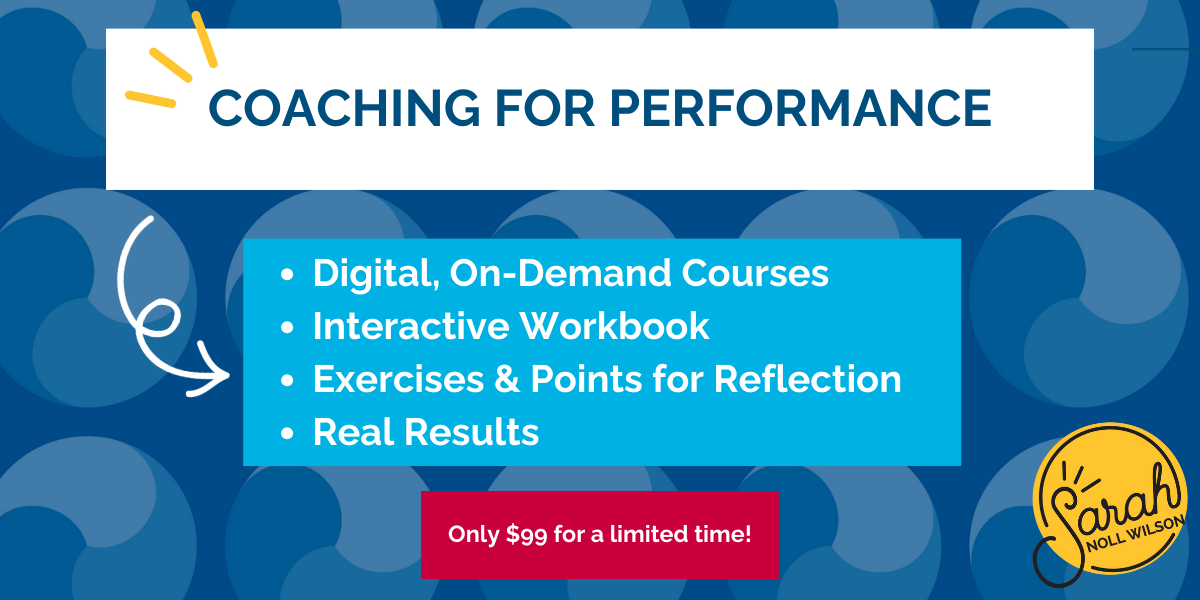
Creating and nurturing your organization’s culture can be a tricky thing. Building trust and psychological safety with your team can be a tricky thing. Empowering your team to contribute their amazing individual strengths while working for the collective can be a tricky thing.
But good news! Tricky things like these are our speciality because they’re so important. Because they move the needle. Because they put humans first. And I’ve found they usually have the greatest rewards once you put them in the forefront.
How do you do that? Let’s look at a few strategies:
Consider How Your Team Wants to be Led
I hear this phrase over and over, but it bears repeating: you lead how you like to be led, by default. It’s a simple concept: we all have our own ideas about how we work best when it comes to structure, workflow, systems, etc. A slippery slope for those in leadership, though, is when you unilaterally generalize that into what works for others without checking in and adjusting, within reason.
Don’t get me wrong–people have designated roles on teams, and you don’t need to bend to every whim or request. Organizations need systems, and someone has to set those. It makes sense for it to be the person or people at the helm, but there is room within that decision-making for curiosity and conversation. Having regular calibrations and check-ins with your team about what’s working for them and what isn’t can help you make adjustments, innovate, and simply connect on a more personal level.
I love to collaborate. Other times, I need space to do my own work and think. I enjoy weekly or bi-weekly check-ins when it reasonably fits the project I’m working on, but I don’t need more than that. On the flip side, some people appreciate more touchpoints or more frequent communication. What can we learn from this? What works well for one team member could, to others, feel like micromanaging and start to foster resentment or contribute to burnout. You don’t know unless you ask, and a lot of building trust comes down to that: getting curious about the people around you and how to best meet their needs.
If you simply ask, “What do you need from me?” you’re probably going to get some version of this answer: “Nothing, I’ve got it.” It’s a power dynamic thing, right? Asking more frequent and better questions can help you go deeper:
- How do you like to be led when taking on a project like this?
- What level of check-in makes you feel comfortable?
- What can I do to make sure you have everything you need here?
- What is something that leaders have done in the past that has gotten in the way of you feeling empowered and engaged?
- What has really worked for you so we can do more of it?
Negotiating how you lead and how people like to be led can be a bit of a dance–there’s that idea of getting curious and “living in the and” again–but it’s a worthwhile one.
Be Clear About Outcomes and Goals
This is a simple idea, but a game-changer: being clear about outcomes and goals early and often gives your team the information they need to do their best work and can free up time and resources in the process.
Say, for example, you’ve asked your team to explore five different proposed solutions to a problem and then come back with their recommendation. They might find two or three great options but hesitate to bring them to you until they’ve padded their list with the rest (that they know won’t make the cut) because they’re concerned about not fulfilling the task. (Truthfully, they may also be concerned that it that might show up on a performance review or disappoint their manager). This adds time to the project and can leave people feeling like they’re spinning their wheels. A better way might be to say, “We need to solve for X problem. I’d love to see a list of five ideas with your ultimate recommendation, but I’m here to talk through it at any time if you think you’ve got a winner.”
Now, let’s consider what would happen if the proposed recommendations you’re asking for only solve for a piece of the challenge at hand, not the whole thing, but you don’t clue your team in on that big picture. This is more common than you might think. In fact, I’ve heard team members say things like, “If I’d known we were heading toward X ultimately, I wouldn’t have suggested Y and might have gone another way.”
The bottom line? Context and clarity leave so much space for innovation and for your team to shine. They’re both powerful and an empowering–double whammy. Don’t be afraid to give more of them.
Encourage Peer Mentoring and Collaboration
You have been intentional about building and nurturing a team of talented people. As you strive to lift them up, how about helping them lift up one another, too?
When we think of mentoring, we usually think about people newer to an organization or a role paired with someone who is more seasoned. And that works! We don’t need to scrap that model altogether. What if, instead, we added another one? What we’re seeing–especially with so many individuals changing jobs during the pandemic and still acclimating to a remote or hybrid work setup–is that those opportunities aren’t always as clear-cut and hierarchical. There is a huge opportunity in this shift.
Peer mentoring might look like this: If Beth is assigned a project that she’s unfamiliar with and Jamal, her peer, has done a couple similar ones successfully, why not encourage the two of them to get together and chat (assuming Jamal has the space in his workload for that conversation)? Then make yourself available for any questions or if Beth gets stuck. There could be any number of positive outcomes: more connection on the team, more knowledge sharing across your organization, higher efficiency, more chances for process improvement and innovation, etc. For Jamal, we know that what we learn is reinforced for us when we teach it to others. And for Beth, maybe next time she can guide the new(ish) person on a similar project, leading to a ripple effect.
This feels extra relevant when we consider that the traditional model of mentoring is often pairing the same people at the top–the “go-getters” whom leaders often see some of themselves in–with those who could benefit from a little extra help. We can absolutely give others more opportunities to step into those higher-functioning roles by initiating these types of peer connections.
The result is a situation where far more people feel supported, have a higher level of job satisfaction, and feel empowered to continue to do a great job while staying engaged with your organization.
What’s Next?
Remember, just as trust can be earned, it can also be depleted. Taking the time to nurture relationships and to listen to your team keeps those precious and critical lines of communication open.
For further reading, I encourage you to check out my colleague Kristin’s deep dive into how to co-design powerful mentoring partnerships and this exploration into how to assess and center your impact as a leader.
What strategies would you add to this list? How do you promote autonomy and empowerment with your team? I’d love to hear what’s working for you . . . and even what’s not. From there, we can look for opportunities to build on what’s going right and repair what needs improvement.

Dr. Teresa Peterson
Dr. Teresa Peterson is the Director of Learning and Development for Sarah Noll Wilson, Inc. In her daily work, she serves as Sarah’s key content collaborator. Teresa enjoys facilitating, researching, and is passionate about applying best practices for learning to make our experiences meaningful, engaging, and accessible for all types of learners. Teresa holds a Doctorate in Education from the University of Northern Iowa and brings over twenty years of experience teaching, facilitating, and leading to our team. Our clients love Teresa’s grounded energy, depth of thought, and ability to listen deeply.



I work with new college students every semester so I have a short turnaround to build trust and get to understand how they prefer to work. I have a list of similar questions that I ask them over time, but I really like the way your questions are worded. They’re more curiosity-driven and open-ended. I especially like, “What level of check-in makes you comfortable?” because I really want to know that as I supervise the projects they do, and I don’t want to be overbearing.
Also, my coworker and I were just talking about how we want to start a conversation with our boss that we need some time to talk about the separate projects we’re working on to bounce ideas off each other and get a different perspective on our projects. This gives me a great idea of how to start that conversation.
Thank you for talking about this and for the great ideas!
This makes me so happy to hear. Hope the conversation goes well!